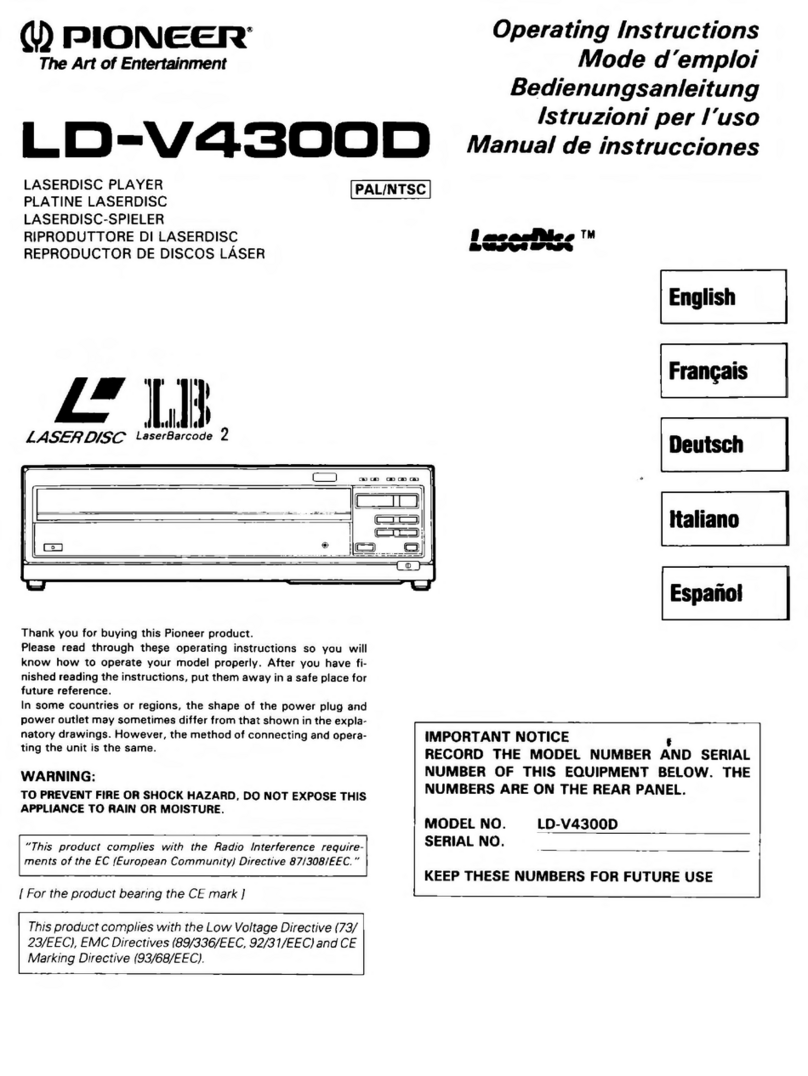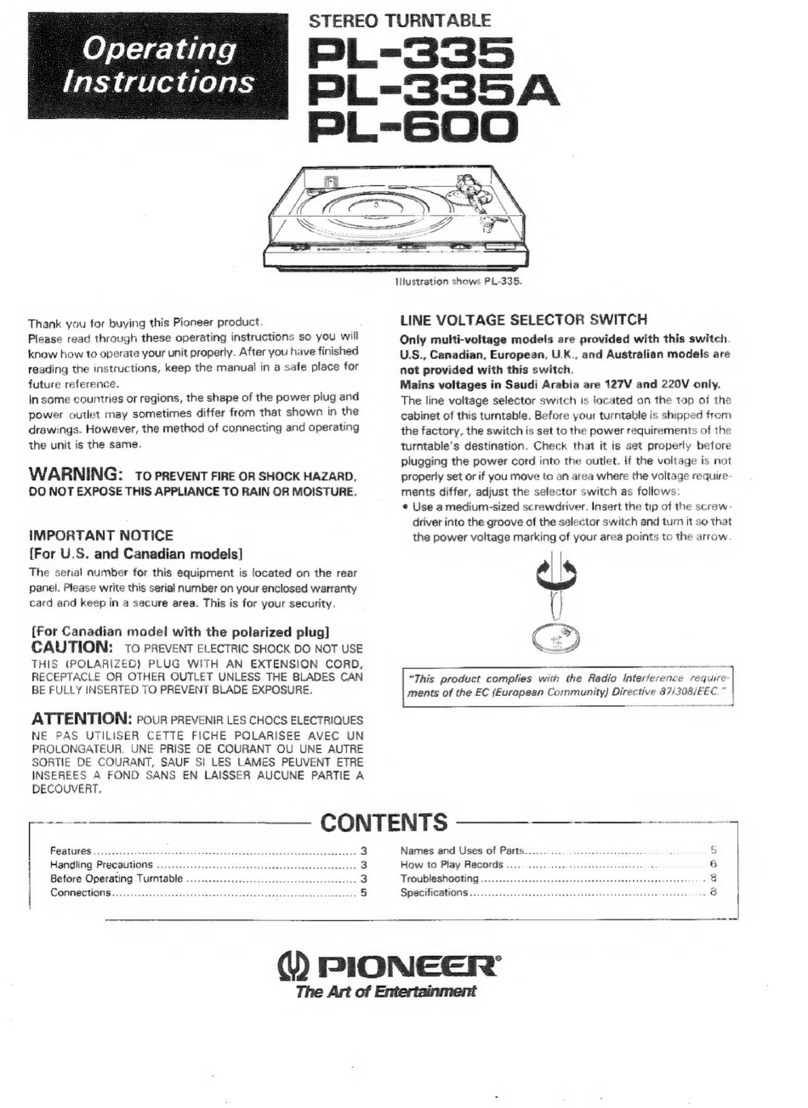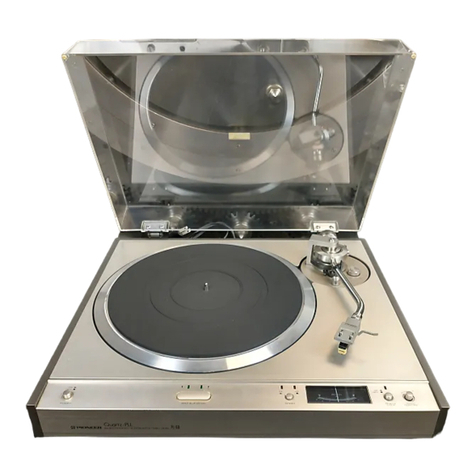Pioneer PL-520 User manual
Other Pioneer Turntable manuals

Pioneer
Pioneer XDJ-1000 User manual

Pioneer
Pioneer pl-930 User manual

Pioneer
Pioneer PL-530 User manual

Pioneer
Pioneer PL-530 User manual
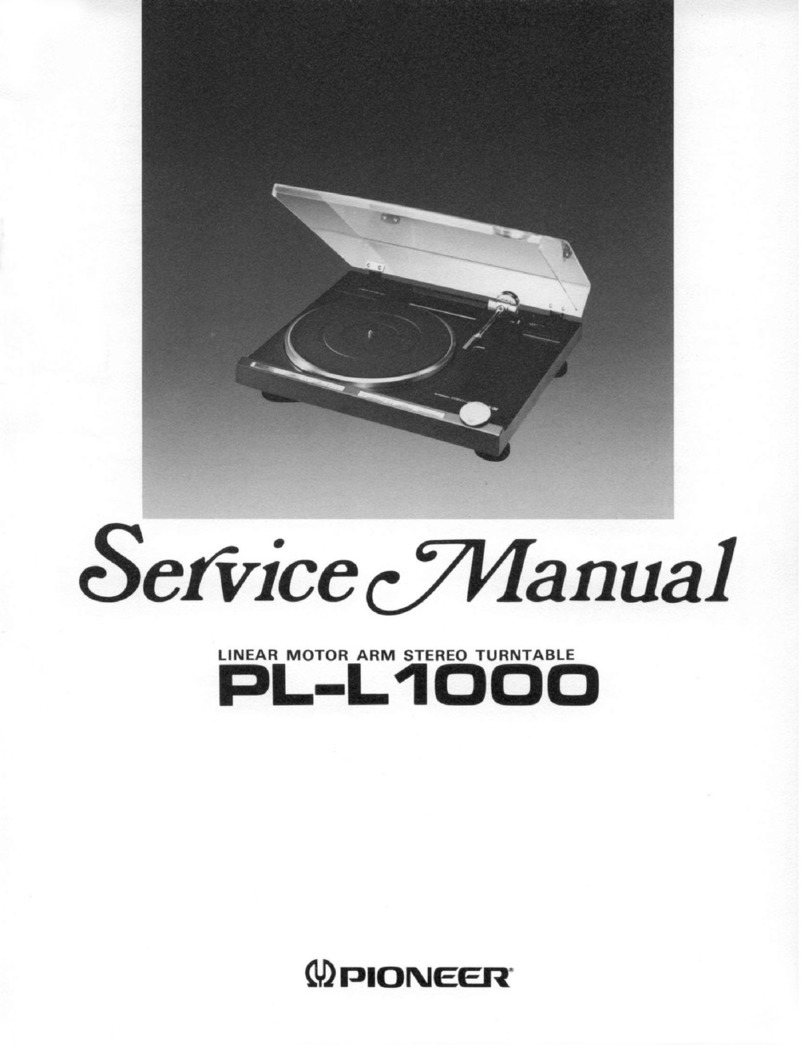
Pioneer
Pioneer PL-L1000 User manual
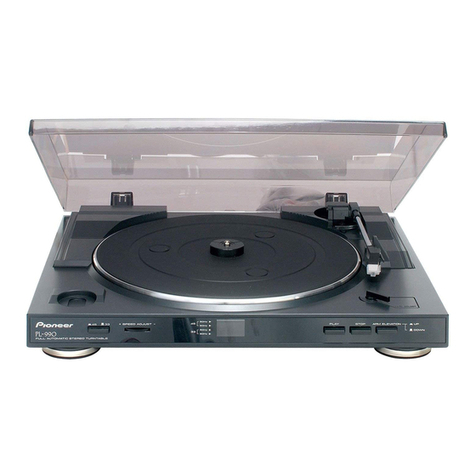
Pioneer
Pioneer PL-990 User manual
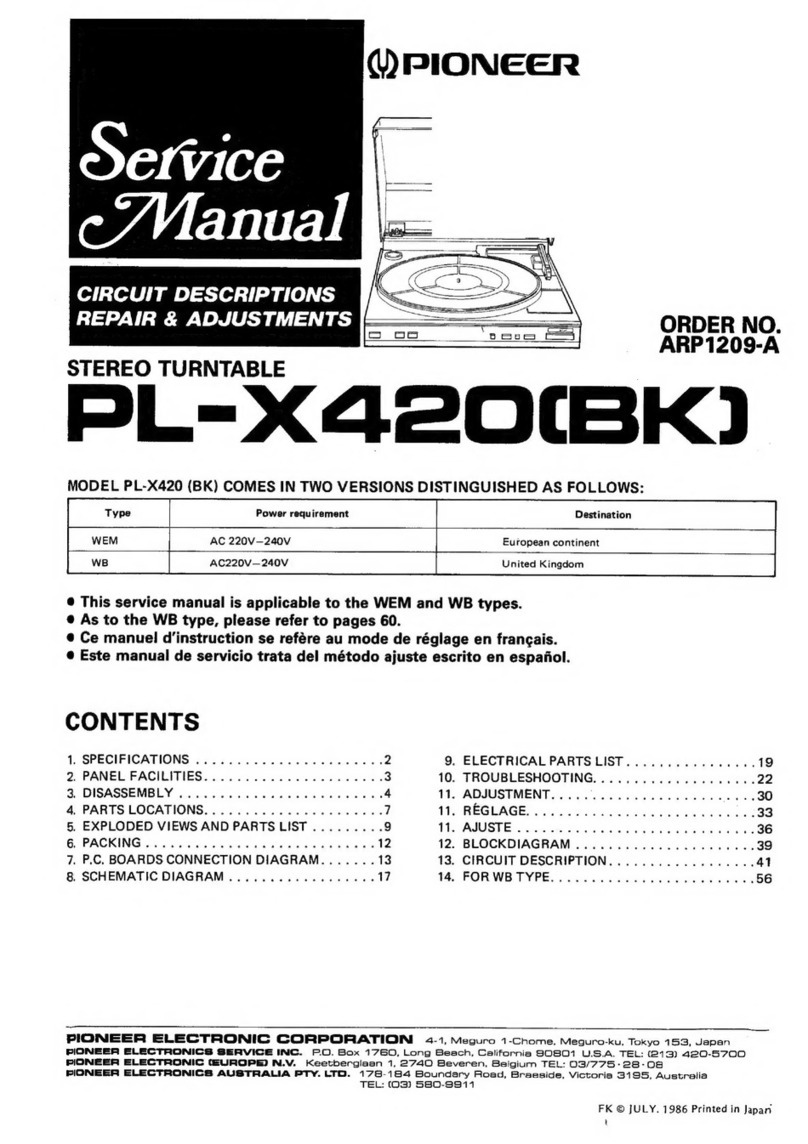
Pioneer
Pioneer PL-X420 User manual

Pioneer
Pioneer DEH-P1Y User manual

Pioneer
Pioneer PL-71 User manual

Pioneer
Pioneer PL-117D User manual
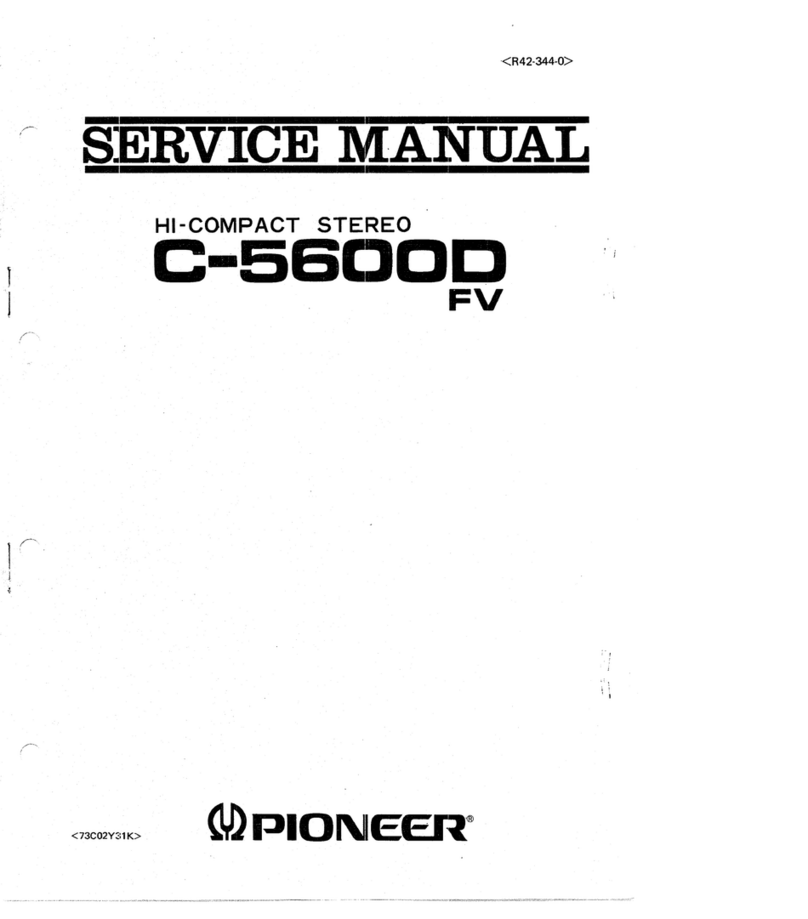
Pioneer
Pioneer C-5600DFV User manual

Pioneer
Pioneer PL-3000/HB User manual

Pioneer
Pioneer pl-x50 User manual

Pioneer
Pioneer PL-200Z User manual

Pioneer
Pioneer PL-570 User manual
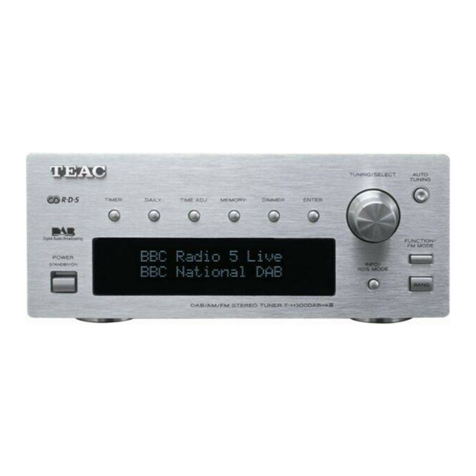
Pioneer
Pioneer PL-05 User manual

Pioneer
Pioneer PL-520 User manual

Pioneer
Pioneer PLX-1000 User manual
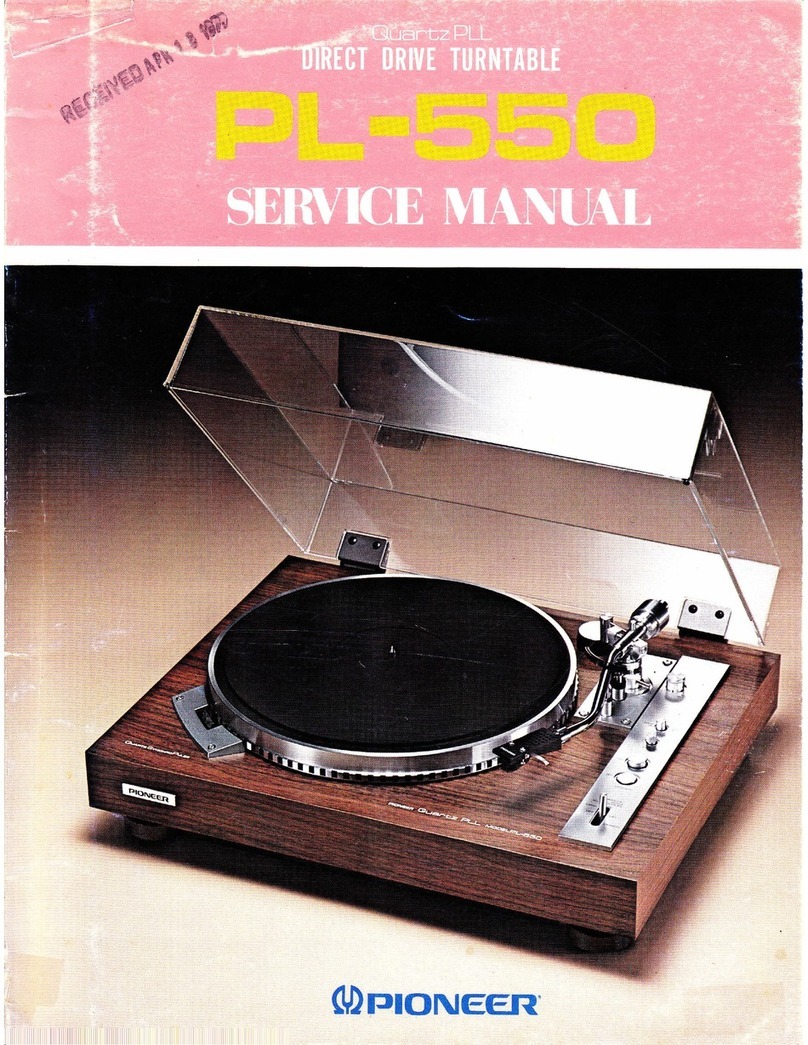
Pioneer
Pioneer PL-550 User manual

Pioneer
Pioneer PL-510 User manual
